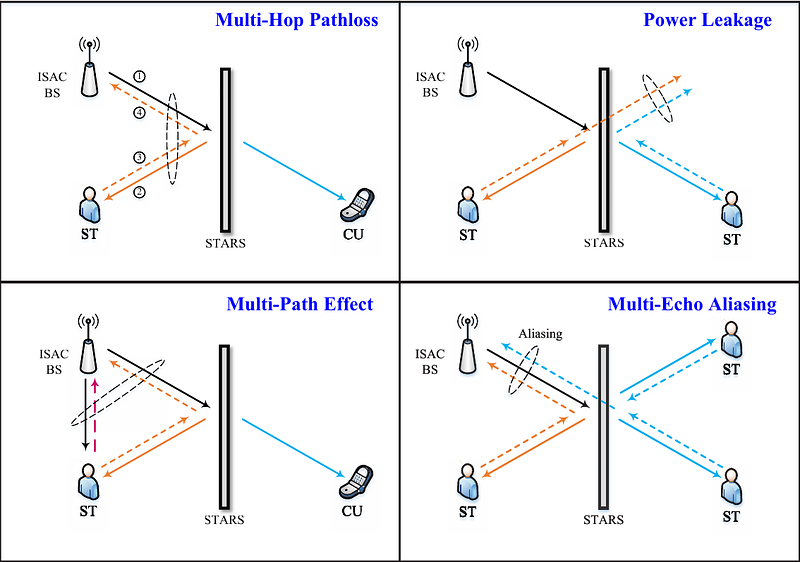STARS for Integrated Sensing and Communications: Challenges, Solutions, and Future Directions

STARS for Integrated Sensing and Communications: Challenges, Solutions, and Future Directions
Zheng Zhang, Zhaolin Wang, Xidong Mu, Jian Chen, Yuanwei Liu
AbstractThis article discusses the employment of simultaneously transmitting and reflecting surface (STARS) for integrated sensing and communication (ISAC) networks. First, two fundamental configurations of STARS-enabled ISAC systems are introduced, namely integrated full-space configuration and separated half-space configuration, as well as their respective advantages and common challenges are identified. To address the aforementioned challenges, a novel sensing-at-STARS design is proposed, where the sensing functionality is achieved at the STARS instead of at the base station. Such a design significantly improves the echo signal energy by eliminating undesired echo energy attenuation/leakage, in addition to establishing favorable echo propagation paths to facilitate sensing information extraction. We also present three practical implementations for sensing-at-STARS, including separated elements, mode-selection elements, and power-splitting elements. Each implementation enables flexible sensing-communication tradeoffs. Numerical results are provided to demonstrate the superiority of the proposed STARS-enabled ISAC design. Finally, we discuss several future research directions.